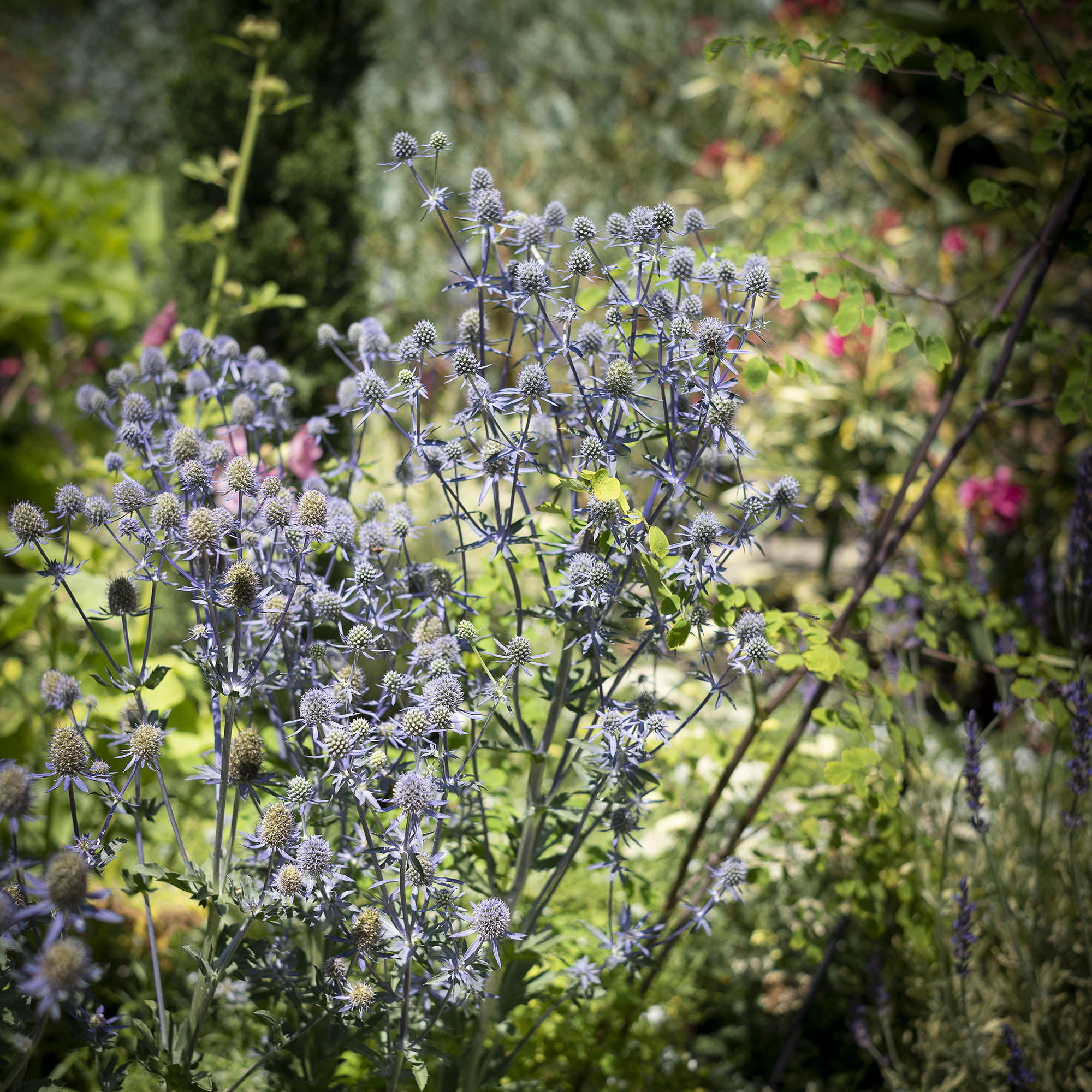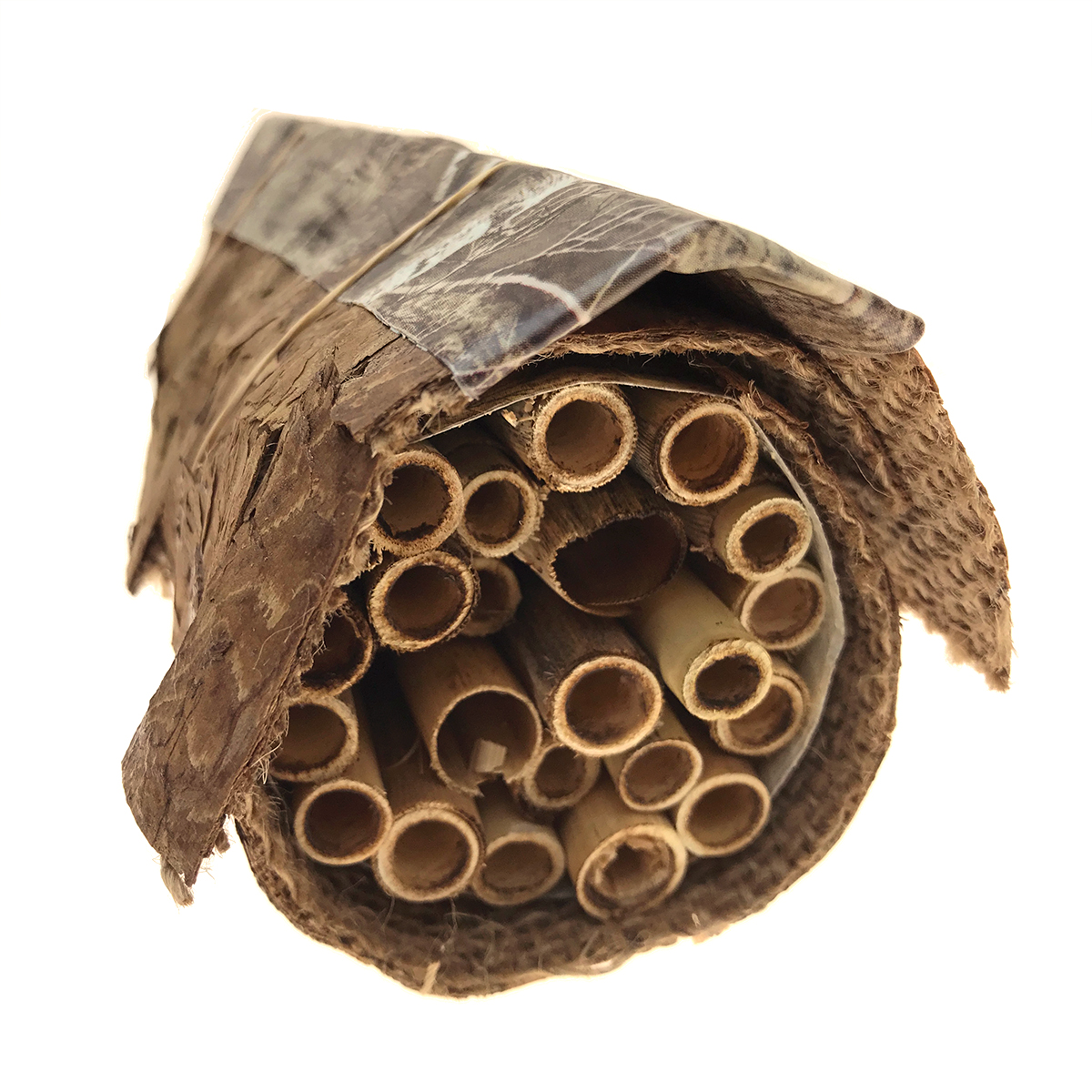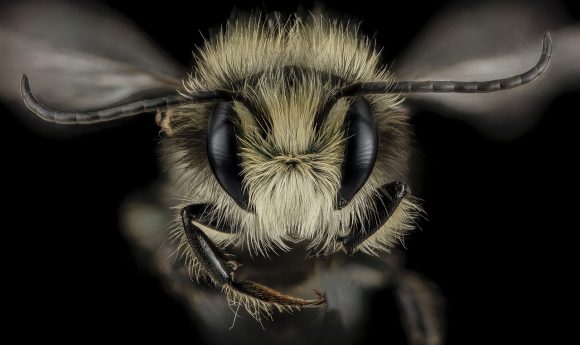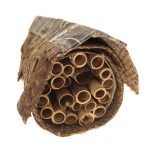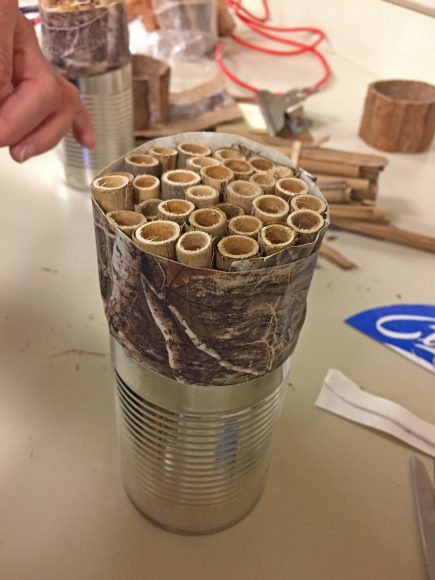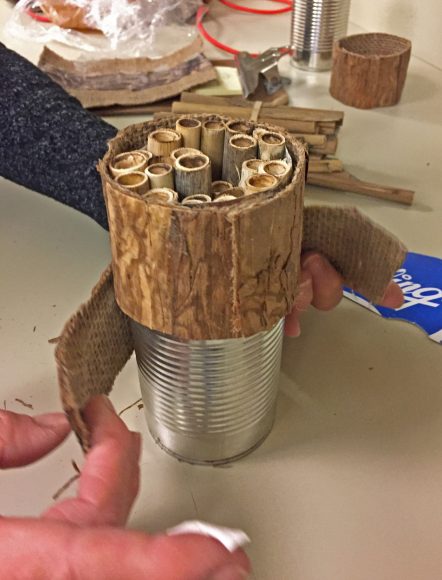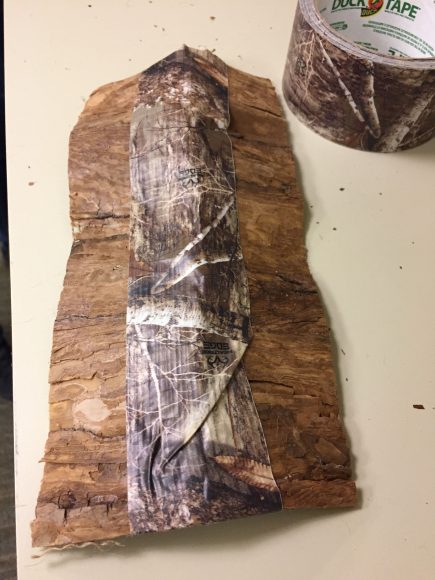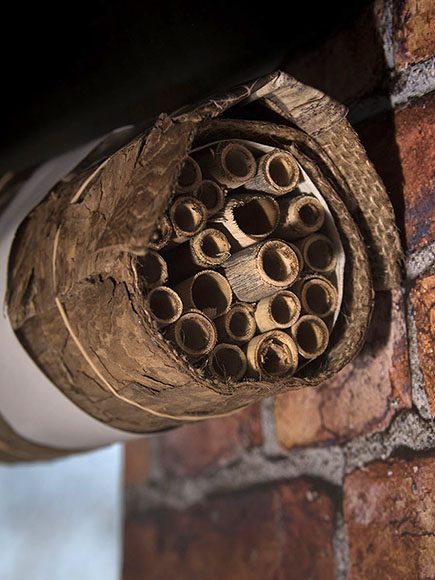If you happened to walk around the Heritage Garden in late June, the unusual blue color of the Moroccan mountain eryngo (pronounced eh-RING-go), Eryngium variifolium, probably caught your eye, and its peculiar perfume tickled your nose. It was also swarming with flying insects.
The odor was not lovely and sweet. I would describe it as similar to musty, molding fruit—not unpleasant, but certainly not a fragrance you would wear. It only lasted a few days, during which time it hosted an amazing number and variety of insects. I attempted to photograph and identify as many of them as I could. This was a lot harder than I expected, because the insects were in constant motion and most of them were small. I didn’t always capture the key features needed to identify them at the species level. In spite of this, you’ll see that that the variety was astounding. Let me introduce you to what I found at the Chicago Botanic Garden recently.
1. Carpenter bee
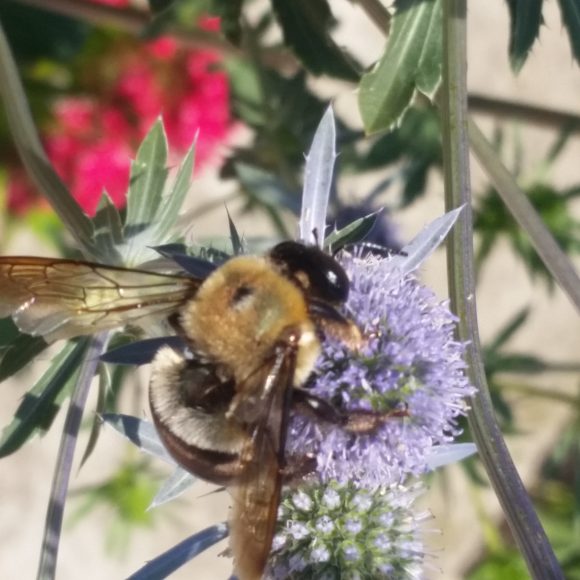
2. Mason bee
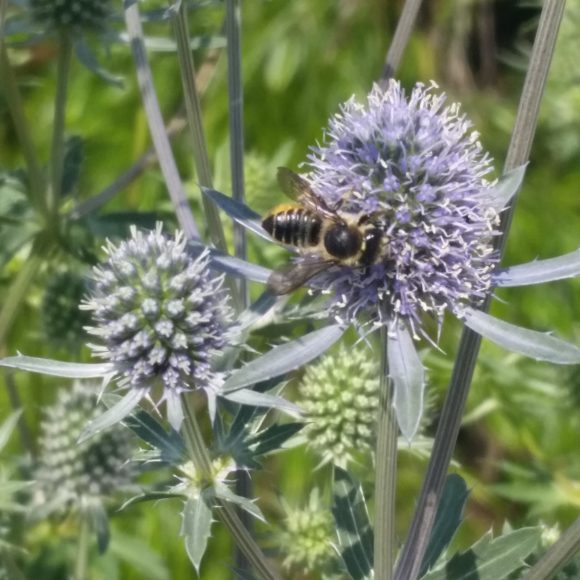
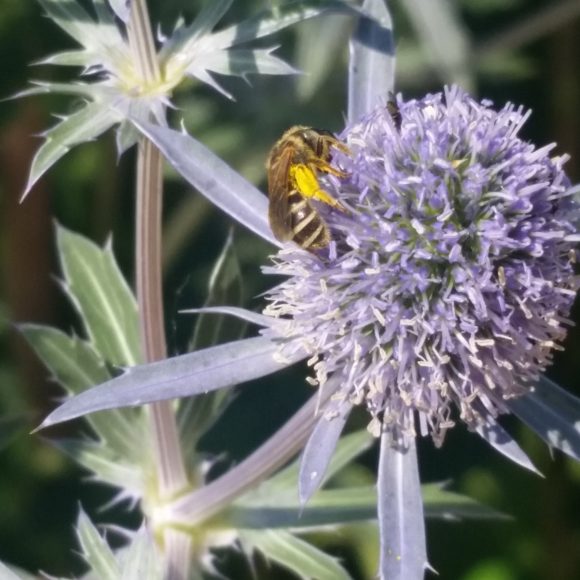
Carpenter bees and Mason bees are native to our region. Honeybees are not native to the United States. I saw honeybees in the Heritage Garden, but they were not interested in this flower. Honeybees tend to go for sweeter-smelling flowers.
3. Red admiral butterfly
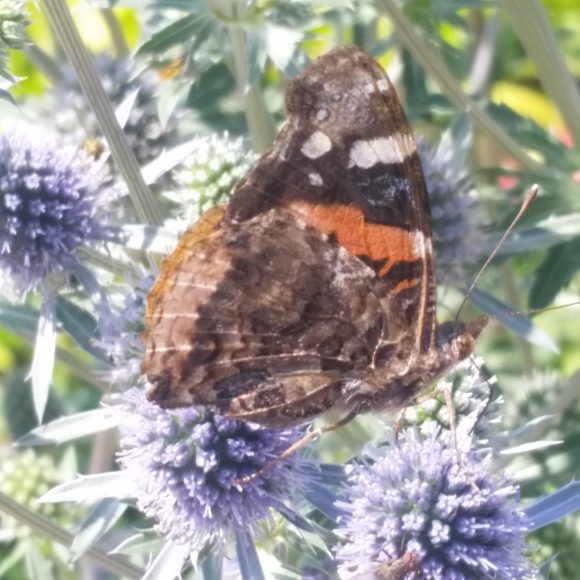
4. Azure butterfly
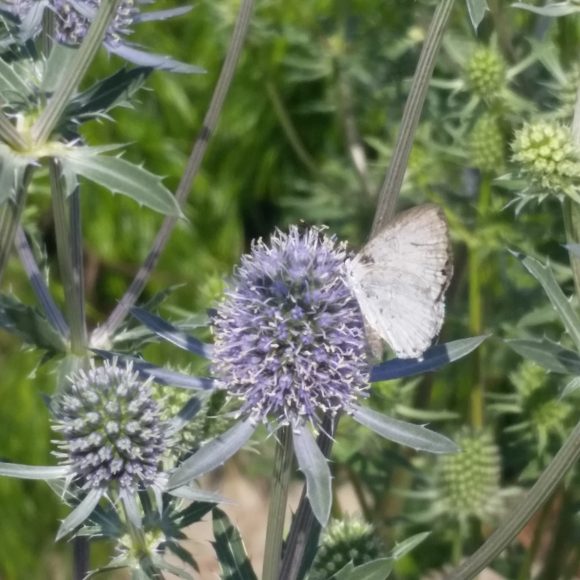
A monarch butterfly also flew overhead while I was taking pictures, but it didn’t stop by. Again, the scent of this flower isn’t attractive to all pollinators.
5. Squash vine borer (moth)
The squash vine borer larva can be a nuisance in a vegetable garden, but it is a beautiful and beneficial pollinator as an adult moth. Sometimes we have to resist the urge to judge our fellow creature as being good or bad.
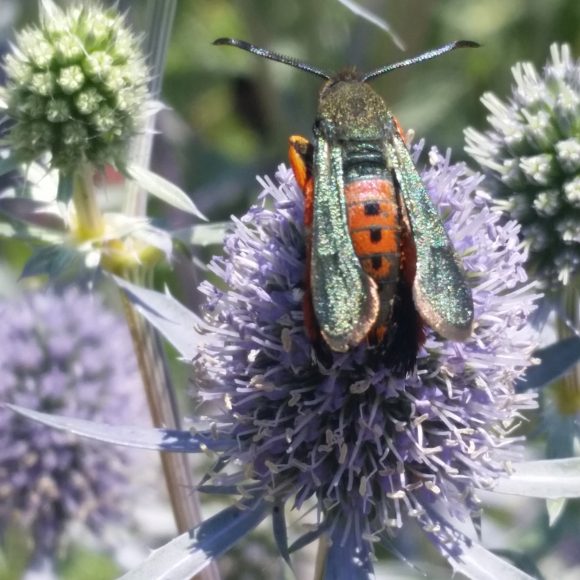
6. Syrphid flies (hoverflies or flower flies)
When we think of flies, we tend to think of those annoying houseflies or other pests, but there are other kinds of flies. The Syrphidae family, also known as hoverflies or flower flies, feed on pollen and therefore serve as important pollinators for many plants. I found three species of syrphid flies on the eryngo.
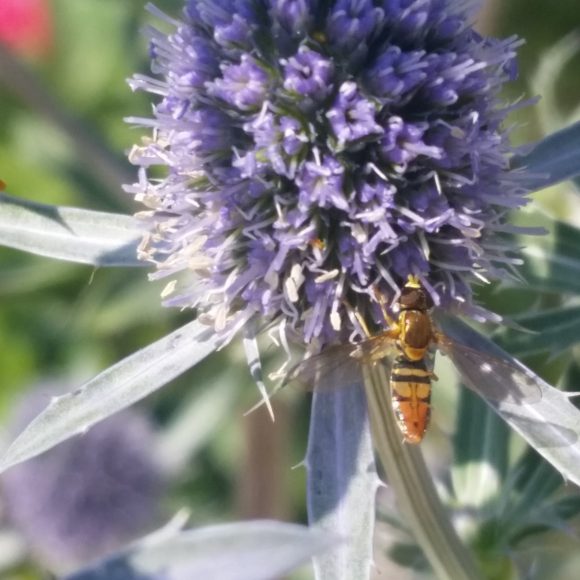
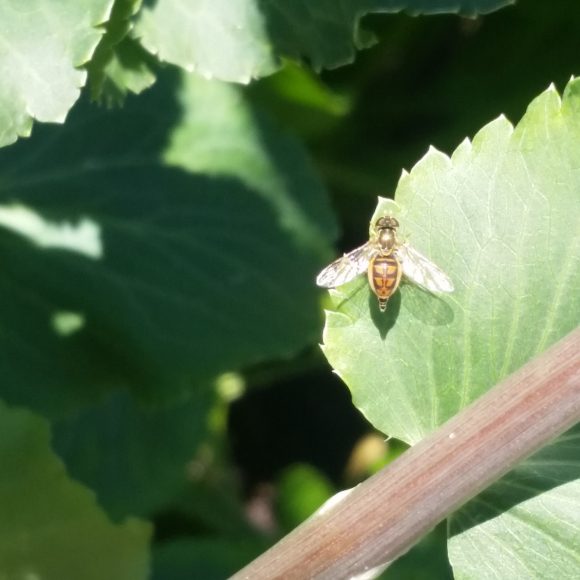
7. Another kind of syrphid fly
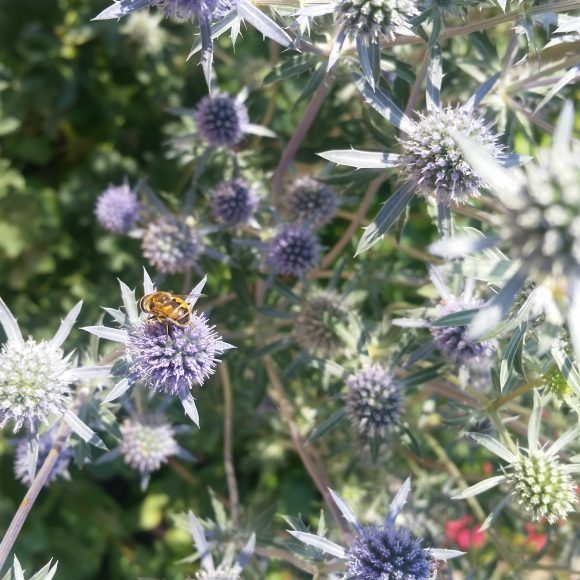
8. Mystery fly, possibly another syrphid
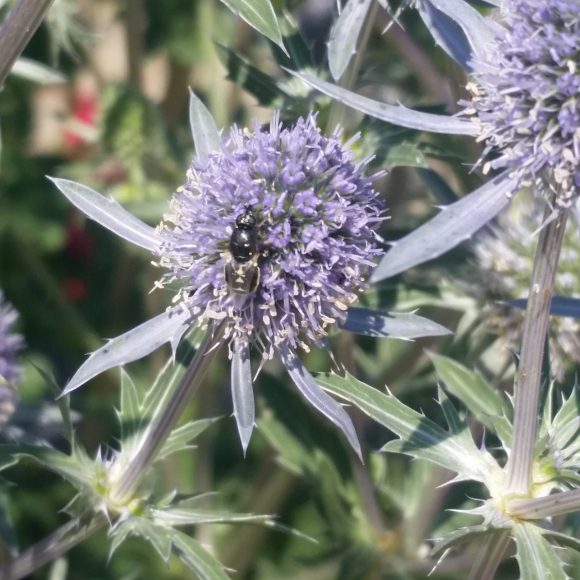
9. Green bottle fly
Houseflies fall into the family of flies known scientifically as Calliphoridae, also called the blowfly family, and they were also represented on our eryngo plant.
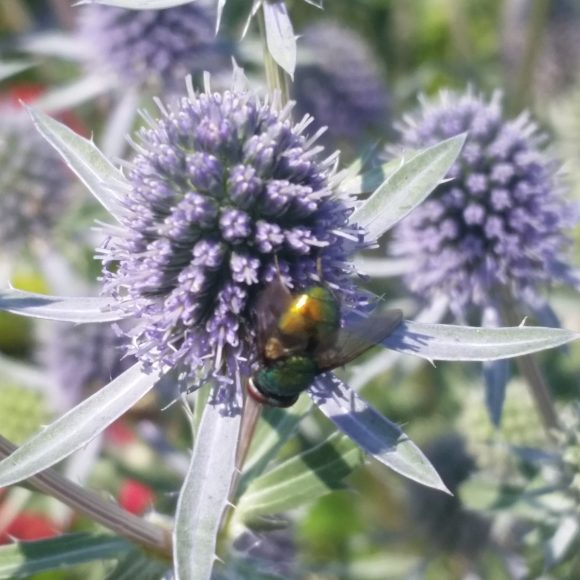
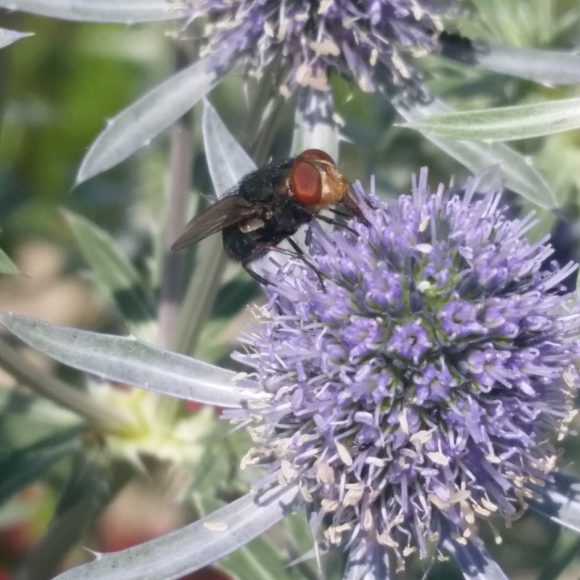
10. Cluster fly
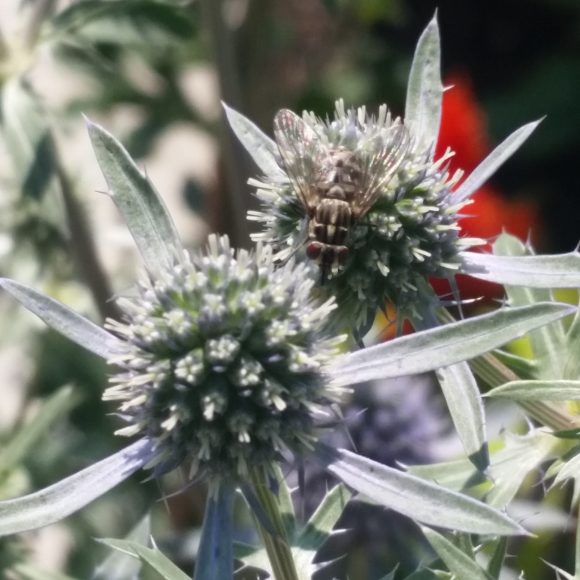
11. Tiger fly (I think)
Tiger flies prey on carpenter bees, which were feeding on the eryngo flowers, so seeing this predator around the eryngo makes sense.
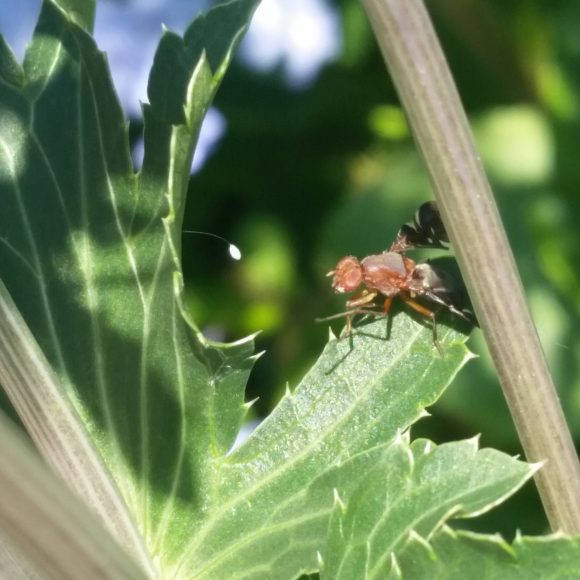
12. Vespid wasp
The wasps I observed were far too busy collecting nectar and pollen to notice me. I had no concerns about being stung.
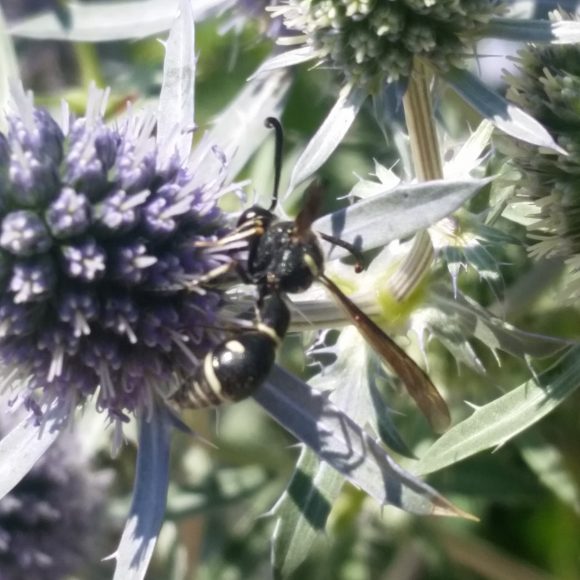
13. Black garden ant
I watched a few ants appear very determined as they walked up the stems of the eryngo, dipped their heads into the flower centers, and went back down the stem as swiftly as they arrived.
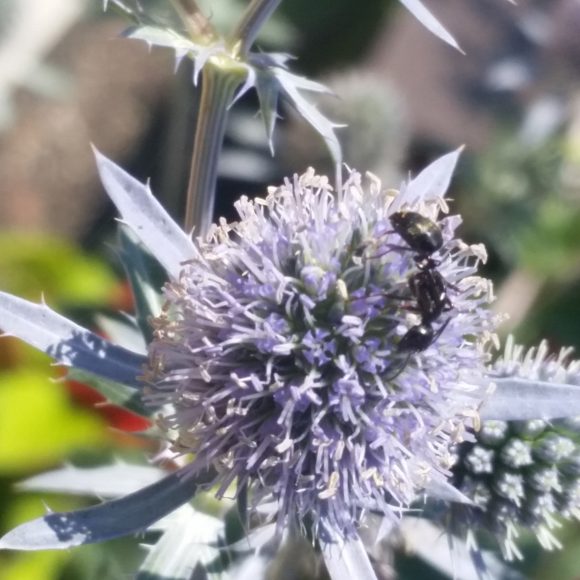
14. Damselfly
Where there are a lot of flying insects, there are going to be some predators. There were damselflies hovering over the blossoms, feeding on the flies, not the flower.
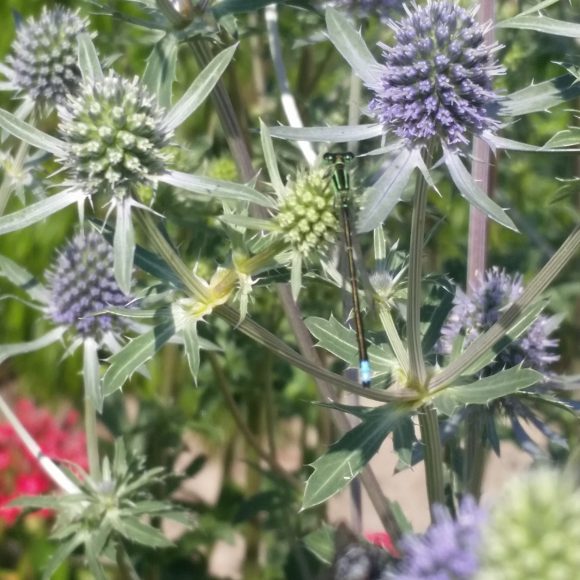
15. Assassin bug
Assassin bugs fall into the category of insects known as “true bugs.” I saw few assassin bugs lurking around the eryngo flowers.
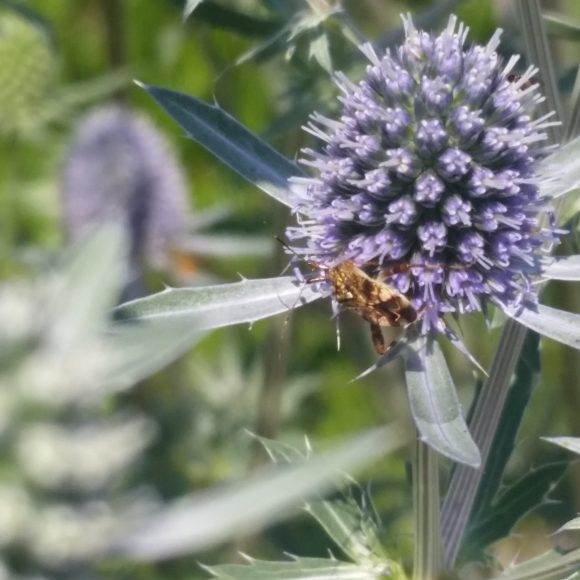
16. A spider web
Like the damselfly and assassin bug, this spider is hanging out somewhere under the flowers to prey on the flies, bees, and other insects that happen into its web.
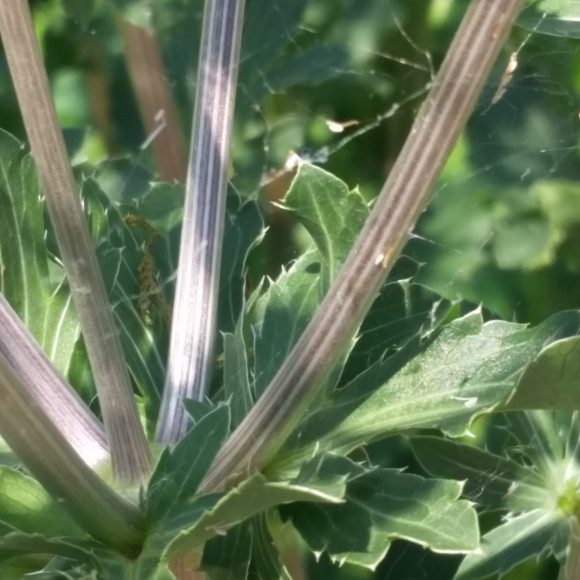
In total, I found two kinds of bees, two butterflies, one moth, six flies, one wasp, one ant, one damselfly, one assassin bug, and one spider—sixteen different bugs on this one bright, smelly plant!
The take-away from my experience is that scent is a really successful strategy for attracting pollinators. Like the titan arum, the Moroccan mountain eryngo produced a super potent blast of odor for a brief period time and then moved on to the next phase in its life cycle, which suggests that it requires a lot of a plant’s energy reserves, and may not be sustainable for a long time. This strategy works well as long as the timing of the bloom coincides with the pollinators’ need to feed and ability to get to the flowers.
I find this phenomenon fascinating. If you share my passion for plants and their relationships with insects, check out Budburst at budburst.org and find out how you can help scientists who need your observations to contribute data to their research.
©2018 Chicago Botanic Garden and my.chicagobotanic.org

